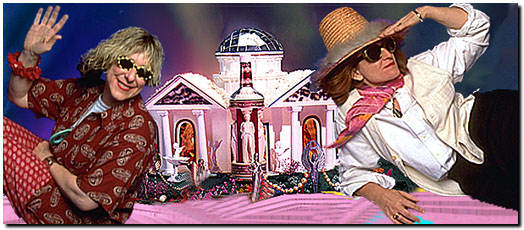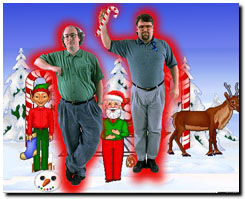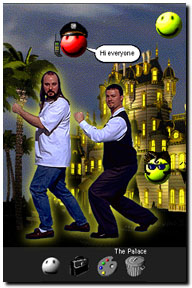
|
|
At the Palace, an online virtual world, entrants are issued smiley-face avatars with which they can roam the palace grounds. Palace developers Mark Jeffrey and Jim Bumgardner stroll the streets.
(Photograph by Douglas Kirkland. Photo illustration by Audrey Shehyn)
|
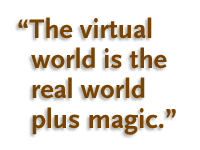
|
|
 ecause it is so easy to assume a new identity in the wired world, it was only a matter of time before virtual worlds, where you can select your own form and shape and then mingle and chat with others using similar disguises, would capture the imagination of the online digerati. Donning the online body of an avatar, the web-wise can now enter parallel universes that come complete with graphic backdrops resembling souped-up sci-fi settings.
ecause it is so easy to assume a new identity in the wired world, it was only a matter of time before virtual worlds, where you can select your own form and shape and then mingle and chat with others using similar disguises, would capture the imagination of the online digerati. Donning the online body of an avatar, the web-wise can now enter parallel universes that come complete with graphic backdrops resembling souped-up sci-fi settings.Mark Pesce, co-developer of the Virtual Reality Modeling Language (VRML) used by developers of these virtual worlds, sees the dawn of this new meta-universe as a way for people to integrate with each other and with technology. "In our overloaded, information-laden world, the only way we can cope with the riot of facts is to adapt it to our senses," says Mark. "The virtual world is the real world plus magic."
|
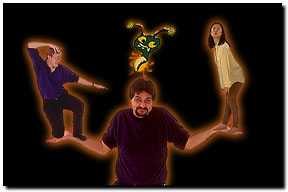
|
|
At Microsoft, Rick Radditz, Manny Vellon, and Lile Cheng, headed by Linda Stone (not pictured) are working to create V-Chat, the Bill Gates version of a virtual world. (Photograph by Roger Ressmeyer. Photo illustration by Audrey Shehyn).
|
|
